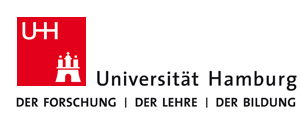UHH>Informatik>NatS>User Web>LeNguyenThinh>IntelligentTutoringSystems>SummaryForMitrovicMartinKoedinger03 (17 Oct 2012, UnknownUser) Print version
Summary For Mitrovic Martin Koedinger 03
Modelling approaches: (Holt, Dubs, Jones, Greer, The state of student modeling, 1994)- overlay modeling
- enumerative bug modeling
- generative and reconstructive modeling
- constraint-based modeling
- Cognitive tutors are based on the ACT-R theory of cognition (Anderson, Lebiere, The atomic components of Thought, 1998), which claims that thare are two long-term memory stores: delcarative and procedural. The theory explains human laerning as going through several phases. The first involves learning declarative knowledge, including factual knowledge, which is represented as chunks. Declarative knowledge is later turned into procedural knowledge, which is goal-oriented and therefore more efficient to use. procedural knowledge is represented in the form of production rules. In the last phase, the production rules are further optimised when the student becomes an expert. The fundamental assumption of ACT-R is that cognitive skills are realised by production rules. In order to support students to learn a specific task, that is, to learn a specific set of production rules that will enable students to perform the task correctly.
- constraint-based tutors based on the Ohlsson's theory of learning from performance errors, which proposes that we often make mistakes when performing a task, even when we have been taught the correct way to do it. According to this theory, we make mistakes because the declarative knowledge we have learned has not been internalized in our procedural knowledge, and so the number of decisions we must make while performing the procedure is sufficiently large that we make mistakes. However, by practicing the task and catching ourselves making mistakes, we modify our procedure to incorporate the appropriate rule that we have vioalted. Over time we internalize all of the declarative knowledge about the task and so the number of mistakes we make is reduced. Ohlsson describes the process of learning from errors as consisting of two phases: erro recognition and error correction. A student needs declarative knowledge to detect an error. If the student does not posess such declarative knowledge, an ITS may play the role of a mentor and inform the student of the mistake. A carefully designed sequence of feedback messages that reflects the action of a human teacher helps the student to overcome problems in his knowledge. The starting point for CBM is that correct solutions are similar to each other in that they satisfy all the general principles of the domain. no correct solution can be arrived at by traversing a problem state that violates a fundamental principle of the domain. In CBM, we are not interested in what the student has done, nut in what state they are currently in. As long as the student ne ver reaches a state that is known to be wrong, they are free to perform whatever actions they please. A violated constraint signals an errorm which translate to incomplete or incorect knowledge.
| Cognitive Tutors | Constraint-Based Tutors |
|---|---|
| ACT-R learning theory | learning from performance erros |
| Cognitive tutors tend to focus on generative knowledge (production rules) | CB tutors teach evaluate knowledge (constraints) |
| high cognitive fidelity, because it is an explicit model of the reasoning that the learner must acquire | domain knowledge in declarative form (-) |
| (-) too rigid, they force students to follow a fixed set of desirable approaches to solving problems | CBM neither imposes nor supports any particular strategy |
| Cognitive tutors are able to solve problems, and having some simulation of problem solving is important for providing planning advice. | CBM-based systems generate instructional actions without being able to solve problems, by comparing the ideal solution to the studnet's solution |
| Cognitive tutors can offer strategic problem-solving hints in terms of the next step to perform in a plan. Hints are generatedby running the production set | CBM tutotrs are not able to solve problems, nut they can provide feedback on missing elements of the solution |
| a correct rule is missing, a correct solution might be rejected | a constraint is missing, a false solution might be correct |
| more time and effort | less time and effort |
| more specific advice-giving capabilities | less comprehensive in terms of specific advice-giving capabilities |
| bug libraries is developed for a certain group of students, it may not cover the bugs that another group of students may make | constraints states are neutral to every body. |
-- LeNguyenThinh -- 03 Jan 2005  Copyright © by the contributing authors. All material on this collaboration platform is the property of the contributing authors.
Copyright © by the contributing authors. All material on this collaboration platform is the property of the contributing authors. Ideas, requests, problems regarding Foswiki? Send feedback
